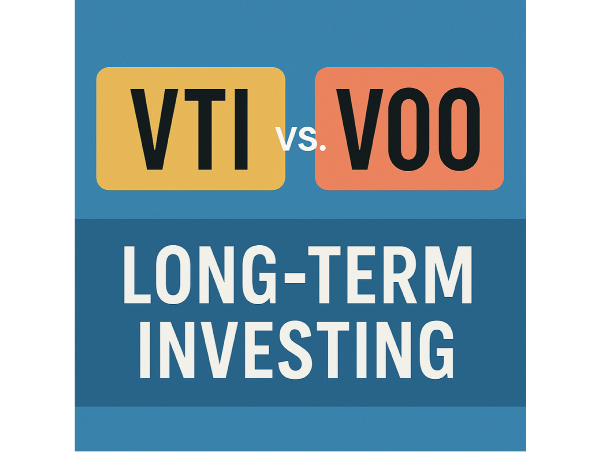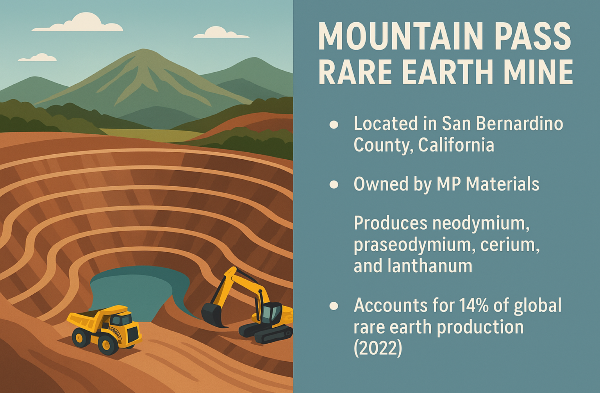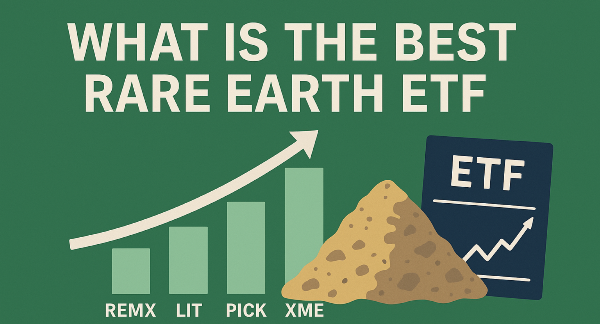Introduction
VTI and VOO are two of the most popular ETFs for long-term investors seeking broad market exposure. VTI tracks the total U.S. stock market, including large, mid, and small-cap stocks, while VOO focuses exclusively on the S&P 500, representing the largest publicly traded companies. Understanding the differences between these funds is essential, as their portfolio compositions influence risk, diversification, and growth potential. Investors must consider factors such as sector allocations, historical performance, and expense ratios when deciding which ETF aligns best with their financial goals.
What Is VTI?
VTI, the Vanguard Total Stock Market ETF, is designed to provide investors with broad exposure to the entire U.S. equity market. It tracks the CRSP U.S. Total Market Index, which includes companies across all market capitalizations, from small-cap to large-cap stocks. As a passively managed fund, VTI aims to replicate the performance of the total stock market rather than relying on active stock selection. This approach ensures diversification and minimizes management costs, making it an attractive option for long-term investors seeking stable returns.
The composition of VTI includes over 3,600 individual stocks, spanning multiple sectors such as technology, healthcare, and financial services. The weighted average market capitalization of VTI’s holdings is approximately $189 billion. Investing in VTI offers several benefits, particularly long-term diversification and cost efficiency.
What Is VOO?
VOO, the Vanguard S&P 500 ETF, is a passively managed fund designed to track the performance of the S&P 500 index. This index consists of 500 of the largest publicly traded companies in the United States, spanning multiple industries such as technology, healthcare, and financial services. VOO provides investors with broad exposure to the U.S. stock market, offering a cost-effective way to participate in the growth of established businesses.
With a low expense ratio of 0.03%, VOO is an attractive option for long-term investors seeking stability and diversification. The portfolio structure of VOO reflects the composition of the S&P 500, with sector weightings that align with market trends. Investing in VOO offers several advantages, particularly diversification, long-term growth potential and low fees.
Comparing Market Exposure and Diversification
Total market funds, such as VTI, provide broader exposure by including small, mid, and large-cap stocks, whereas S&P 500 funds like VOO focus exclusively on large-cap companies. VTI tracks the CRSP U.S. Total Market Index, encompassing thousands of stocks across different market capitalizations. In contrast, VOO tracks the S&P 500, which consists of 500 of the largest publicly traded U.S. companies, offering a more concentrated approach to market exposure.
The inclusion of small- and mid-cap stocks in VTI influences its performance by introducing higher volatility and growth potential. However, these stocks also carry greater risk, as they have high-sensitivity to macroeconomic factors. Sector concentration and diversification differ between VOO and VTI due to their underlying index compositions.
Historical Performance Comparison
VTI and VOO have demonstrated strong long-term performance, closely tracking their respective indices. Over the past decade, VOO has delivered an annualized return of 12.85%, slightly outperforming VTI, which has returned 12.18% annually. This difference is primarily due to VOO’s exclusive focus on large-cap stocks, which tend to be more stable and profitable over time. VTI, while offering broader market exposure, includes mid- and small-cap stocks that introduce additional volatility.
Volatility and risk analysis highlight key differences between these ETFs. VTI has a higher standard deviation of 20.23%, indicating greater price fluctuations compared to VOO’s 19.37%. It has experienced a maximum drawdown of -55.45%, whereas VOO’s worst decline was -33.99%. Market cycles significantly impact the performance of both funds. Historical data indicates that VOO has maintained steadier returns across different market conditions, making it a reliable choice for conservative investors.
Expense Ratios and Cost Considerations
VTI and VOO are both cost-effective options for long-term investors. This fee structure ensures that a minimal portion of investment returns is allocated to fund management costs. Additionally, passive management reduces portfolio turnover, minimizing transaction costs and tax implications. Liquidity and trading considerations also play a role in fund selection. Both VTI and VOO are highly liquid ETFs. VOO, which tracks the S&P 500, tends to have slightly higher trading volume than VTI, making it more accessible for frequent traders. Investors should assess liquidity metrics when selecting an ETF, as efficient trading conditions contribute to overall portfolio performance.
Growth Potential vs. Stability
VTI’s exposure to small- and mid-cap stocks enhances its growth potential by including companies with higher expansion opportunities. However, these stocks also introduce greater volatility. Contrarily, large-cap stocks provide stability, mid- and small-cap holdings allow VTI to benefit from broader market growth. VOO, as a large-cap-focused ETF, offers greater stability due to its concentration in established companies.
Balancing risk and reward is essential when selecting between VTI and VOO for long-term investing strategies. VTI provides diversification across market capitalizations, increasing growth potential but also introducing higher volatility. VOO, with its exclusive focus on large-cap stocks, ensures stability but may not capture the same level of upside as VTI. Investors should assess their financial goals, risk tolerance, and investment horizon to determine which ETF aligns best with their portfolio needs.
Risk Factors and Economic Sensitivity
Market fluctuations impact VTI and VOO differently due to their underlying compositions. During bull markets, VTI often outperforms VOO due to the rapid growth of smaller firms. However, in downturns, VOO’s large-cap holdings provide greater resilience, making it a safer option for conservative investors.
Sensitivity to economic downturns and Federal Reserve policies plays a crucial role in determining the performance of both ETFs. Risk mitigation strategies help investors manage exposure to market fluctuations when holding VTI or VOO. Regular portfolio rebalancing ensures alignment with financial goals.
Which ETF Is Better for Different Investor Profiles?
Evaluating financial goals and investment time horizons is essential when deciding between VTI and VOO. Investors focused on long-term growth may prefer VTI due to its broader market exposure, including small- and mid-cap stocks that offer higher growth potential. Those seeking stability and predictable returns might find VOO more suitable, as it tracks the S&P 500, which consists of well-established large-cap companies.
VTI provides exposure to emerging companies, making it ideal for those willing to accept higher volatility for potential gains. VOO, with its concentration in large-cap stocks, offers a more conservative approach, reducing exposure to market fluctuations. Assessing sector trends and historical performance helps investors make informed decisions about fund selection.
Investors can adjust allocations based on market conditions, increasing VTI holdings during economic expansions and shifting toward VOO in uncertain periods. Additionally, combining these ETFs with fixed-income assets or international equities enhances portfolio resilience.
Conclusion
Deciding between VTI and VOO for long-term investing depends on an investor’s financial goals, risk tolerance, and preference for market exposure. VTI offers broader diversification by including small-, mid-, and large-cap stocks, making it ideal for those seeking higher growth potential. VOO, on the other hand, provides stability with its exclusive focus on large-cap stocks, ensuring consistent returns during different market cycles.
While both ETFs maintain low expense ratios and strong historical performance, investors must weigh growth opportunities against portfolio stability when selecting the best fund. By understanding sector allocations, market trends, and economic sensitivity, investors can make well-informed decisions that align with their long-term investment strategy.




























Introduction
VTI and VOO are two of the most popular ETFs for long-term investors seeking broad market exposure. VTI tracks the total U.S. stock market, including large, mid, and small-cap stocks, while VOO focuses exclusively on the S&P 500, representing the largest publicly traded companies. Understanding the differences between these funds is essential, as their portfolio compositions influence risk, diversification, and growth potential. Investors must consider factors such as sector allocations, historical performance, and expense ratios when deciding which ETF aligns best with their financial goals.
What Is VTI?
VTI, the Vanguard Total Stock Market ETF, is designed to provide investors with broad exposure to the entire U.S. equity market. It tracks the CRSP U.S. Total Market Index, which includes companies across all market capitalizations, from small-cap to large-cap stocks. As a passively managed fund, VTI aims to replicate the performance of the total stock market rather than relying on active stock selection. This approach ensures diversification and minimizes management costs, making it an attractive option for long-term investors seeking stable returns.
The composition of VTI includes over 3,600 individual stocks, spanning multiple sectors such as technology, healthcare, and financial services. The weighted average market capitalization of VTI’s holdings is approximately $189 billion. Investing in VTI offers several benefits, particularly long-term diversification and cost efficiency.
What Is VOO?
VOO, the Vanguard S&P 500 ETF, is a passively managed fund designed to track the performance of the S&P 500 index. This index consists of 500 of the largest publicly traded companies in the United States, spanning multiple industries such as technology, healthcare, and financial services. VOO provides investors with broad exposure to the U.S. stock market, offering a cost-effective way to participate in the growth of established businesses.
With a low expense ratio of 0.03%, VOO is an attractive option for long-term investors seeking stability and diversification. The portfolio structure of VOO reflects the composition of the S&P 500, with sector weightings that align with market trends. Investing in VOO offers several advantages, particularly diversification, long-term growth potential and low fees.
Comparing Market Exposure and Diversification
Total market funds, such as VTI, provide broader exposure by including small, mid, and large-cap stocks, whereas S&P 500 funds like VOO focus exclusively on large-cap companies. VTI tracks the CRSP U.S. Total Market Index, encompassing thousands of stocks across different market capitalizations. In contrast, VOO tracks the S&P 500, which consists of 500 of the largest publicly traded U.S. companies, offering a more concentrated approach to market exposure.
The inclusion of small- and mid-cap stocks in VTI influences its performance by introducing higher volatility and growth potential. However, these stocks also carry greater risk, as they have high-sensitivity to macroeconomic factors. Sector concentration and diversification differ between VOO and VTI due to their underlying index compositions.
Historical Performance Comparison
VTI and VOO have demonstrated strong long-term performance, closely tracking their respective indices. Over the past decade, VOO has delivered an annualized return of 12.85%, slightly outperforming VTI, which has returned 12.18% annually. This difference is primarily due to VOO’s exclusive focus on large-cap stocks, which tend to be more stable and profitable over time. VTI, while offering broader market exposure, includes mid- and small-cap stocks that introduce additional volatility.
Volatility and risk analysis highlight key differences between these ETFs. VTI has a higher standard deviation of 20.23%, indicating greater price fluctuations compared to VOO’s 19.37%. It has experienced a maximum drawdown of -55.45%, whereas VOO’s worst decline was -33.99%. Market cycles significantly impact the performance of both funds. Historical data indicates that VOO has maintained steadier returns across different market conditions, making it a reliable choice for conservative investors.
Expense Ratios and Cost Considerations
VTI and VOO are both cost-effective options for long-term investors. This fee structure ensures that a minimal portion of investment returns is allocated to fund management costs. Additionally, passive management reduces portfolio turnover, minimizing transaction costs and tax implications. Liquidity and trading considerations also play a role in fund selection. Both VTI and VOO are highly liquid ETFs. VOO, which tracks the S&P 500, tends to have slightly higher trading volume than VTI, making it more accessible for frequent traders. Investors should assess liquidity metrics when selecting an ETF, as efficient trading conditions contribute to overall portfolio performance.
Growth Potential vs. Stability
VTI’s exposure to small- and mid-cap stocks enhances its growth potential by including companies with higher expansion opportunities. However, these stocks also introduce greater volatility. Contrarily, large-cap stocks provide stability, mid- and small-cap holdings allow VTI to benefit from broader market growth. VOO, as a large-cap-focused ETF, offers greater stability due to its concentration in established companies.
Balancing risk and reward is essential when selecting between VTI and VOO for long-term investing strategies. VTI provides diversification across market capitalizations, increasing growth potential but also introducing higher volatility. VOO, with its exclusive focus on large-cap stocks, ensures stability but may not capture the same level of upside as VTI. Investors should assess their financial goals, risk tolerance, and investment horizon to determine which ETF aligns best with their portfolio needs.
Risk Factors and Economic Sensitivity
Market fluctuations impact VTI and VOO differently due to their underlying compositions. During bull markets, VTI often outperforms VOO due to the rapid growth of smaller firms. However, in downturns, VOO’s large-cap holdings provide greater resilience, making it a safer option for conservative investors.
Sensitivity to economic downturns and Federal Reserve policies plays a crucial role in determining the performance of both ETFs. Risk mitigation strategies help investors manage exposure to market fluctuations when holding VTI or VOO. Regular portfolio rebalancing ensures alignment with financial goals.
Which ETF Is Better for Different Investor Profiles?
Evaluating financial goals and investment time horizons is essential when deciding between VTI and VOO. Investors focused on long-term growth may prefer VTI due to its broader market exposure, including small- and mid-cap stocks that offer higher growth potential. Those seeking stability and predictable returns might find VOO more suitable, as it tracks the S&P 500, which consists of well-established large-cap companies.
VTI provides exposure to emerging companies, making it ideal for those willing to accept higher volatility for potential gains. VOO, with its concentration in large-cap stocks, offers a more conservative approach, reducing exposure to market fluctuations. Assessing sector trends and historical performance helps investors make informed decisions about fund selection.
Investors can adjust allocations based on market conditions, increasing VTI holdings during economic expansions and shifting toward VOO in uncertain periods. Additionally, combining these ETFs with fixed-income assets or international equities enhances portfolio resilience.
Conclusion
Deciding between VTI and VOO for long-term investing depends on an investor’s financial goals, risk tolerance, and preference for market exposure. VTI offers broader diversification by including small-, mid-, and large-cap stocks, making it ideal for those seeking higher growth potential. VOO, on the other hand, provides stability with its exclusive focus on large-cap stocks, ensuring consistent returns during different market cycles.
While both ETFs maintain low expense ratios and strong historical performance, investors must weigh growth opportunities against portfolio stability when selecting the best fund. By understanding sector allocations, market trends, and economic sensitivity, investors can make well-informed decisions that align with their long-term investment strategy.